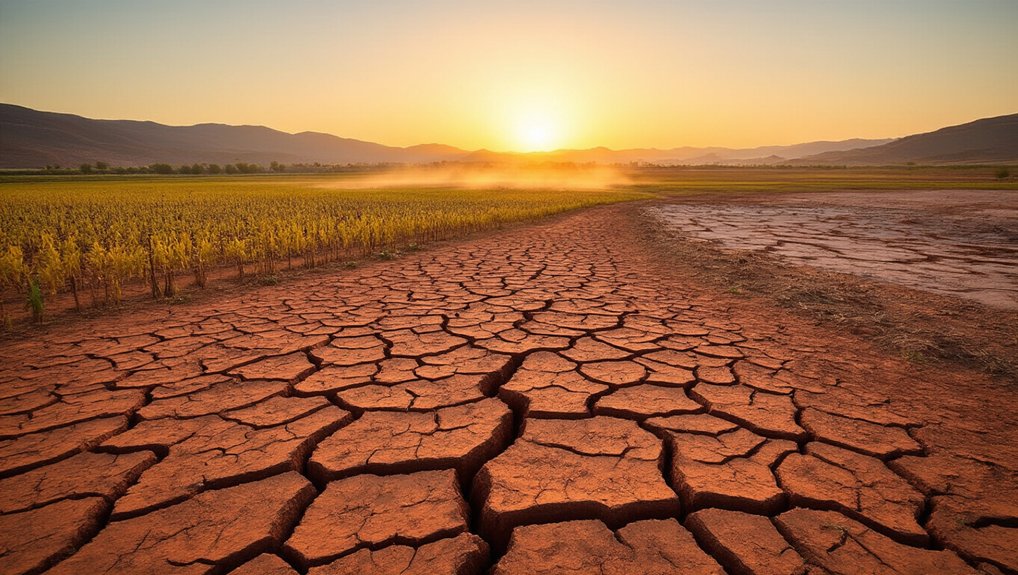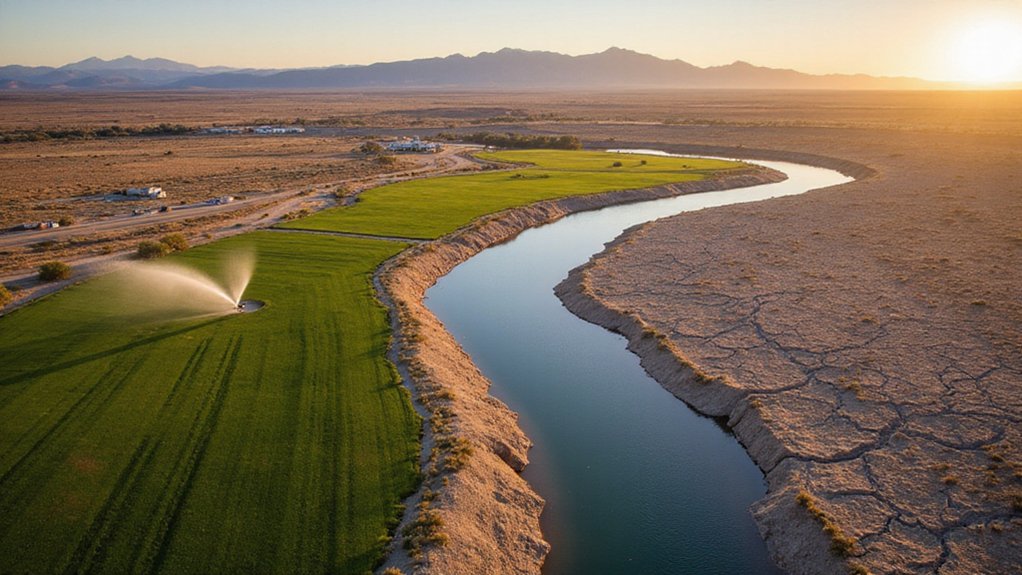As the West Coast faces significant changes in its weather patterns, atmospheric rivers—narrow bands of moisture that deliver crucial rainfall—are becoming less frequent across Washington, Oregon, and California. Research shows these essential rain systems have decreased by nearly 4% per decade since 1980, with Portland seeing rain rates drop by more than 2 millimeters per decade.
The West Coast’s lifelines—atmospheric rivers—are vanishing at an alarming rate, shrinking rainfall patterns across three states since 1980.
The decline stems from several factors, including shifts in the jet stream, ocean variability, reduced tropical water vapor, and increased Arctic air intrusion. These changes are redirecting atmospheric rivers away from key West Coast regions where they once reliably delivered precipitation.
Regional differences in rainfall have become stark. While Northern California experienced nine strong atmospheric rivers during Water Year 2025, exceeding the normal average of six, Southern California saw just one moderate event and no strong or extreme systems through April 2025. This disparity left Southern California with only 70% of its normal precipitation by March 2025.
The impact on groundwater has been mixed. Though Water Year 2024 saw near-average precipitation overall, local variations were extreme. Currently, 49% of wells statewide show declining groundwater trends over the past 20 years, with 20% remaining below normal levels in 2025. However, 44% are at normal levels, and 36% are above normal.
Drought conditions have worsened, with 58.53% of the California-Nevada area now experiencing drought—an increase of nearly 39% since the start of Water Year 2025. Southern regions face extreme to exceptional drought conditions, with South Coast Drainage recording its second-driest October-January period on record.
These changes align with broader climate shifts, including more frequent La Niña-like conditions and an increasingly variable East Asian Subtropical Jet Stream. This pattern impacts hydroelectric generation, which typically serves as reliable energy storage during periods of climate variability. Despite the overall drying trend, extreme precipitation events linked to atmospheric rivers are actually increasing when they do occur. When major atmospheric rivers do arrive, they can be intense. The storms of late 2022 and early 2023 caused over $3 billion in damage and 21 deaths across California, while temporarily recharging watersheds and relieving drought conditions. Atmospheric rivers play a crucial role in replenishing water resources despite their sometimes destructive impacts.
Scientists now track these events using GPS geodesy, which measures ground deformation during major rain and snow events.
References
- https://insideclimatenews.org/news/09082025/atmospheric-rivers-move-east/
- https://eos.org/articles/california-storms-recharged-watersheds-geodesy-data-reveal
- https://cw3e.ucsd.edu/wp-content/uploads/2025/04/WY2025_April_Summary/WY2025_April_Summary.pdf
- https://cww.water.ca.gov/service/document/hydroreport
- https://www.drought.gov/drought-status-updates/drought-status-update-california-nevada-2025-02-13








